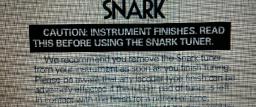Introduce Yourself!
General mountain dulcimer or music discussions
Well, this is an analog synthesizer . There is no MIDI. It is not a computer. Think Apollo era technology.
What's more is this is also a modular synthesizer . Every component is separate and must be connected via a wire. The synthesizer is only controlled by analog electricity, i.e., control voltages. 1 volt = 1 octave. This is a 5 volt system, therefore, 5 octaves.
Quote: " Can your system deal with input from a microphone or a common electric guitar? If not, an electric dulcimer will be no different."
Yes, in fact the only way to get external inputs is via common inputs like an electric guitar or microphone.
Are there digital components? Yes, but the principle is the same: It's only controlled by a wire and knobs. Even external MIDI has to be converted into control voltages, i.e. analog electrical signals where the synth itself is calibrated to 1 volt per octave making it possible to make music out of pure electricity.
To get a better idea of what I mean, here's the little clip Alabama Public TV did on me: https://www.pbs.org/video/black-warrior-lures-ibg1ax/
So, my thing is I want to add dulcimer to this whole mix. Getting an analog instrument into my synth is easy. It's just another microphone via the I/O input or the envelope follower . The envelop follower allows me to take any external audio signal, record player, tape recorder, iPhone, instruments, microphone even other synthesizers, and bring the level up to AE modular synth levels, which are very hot, btw. From there:
Quote: " Now, from the input signal an envelope is derived, giving the volume of the signal as CV [control voltage] which can control what you want, e.g. filter cutoff, pitch or what else is CV controllable within your AE system. The SMOOTH knob controls the shape of the envelope/suppression of the audio signal component." (From the AE Modular Wiki page.)
So, with all that, I ask would something with a magnetic pick up be more "interesting" than a Piezo pickup? Again the modular synth doesn't know what MIDI is. It only eats, digests and poops electrons. From your answer, and from what I understand, it won't matter.
It's almost as if you took a bunch of guitar pedals, stripped off the casing, and had to manually patch every wire and connection yourself to make it do anything.
updated by @damon: 01/21/25 12:06:28PM

